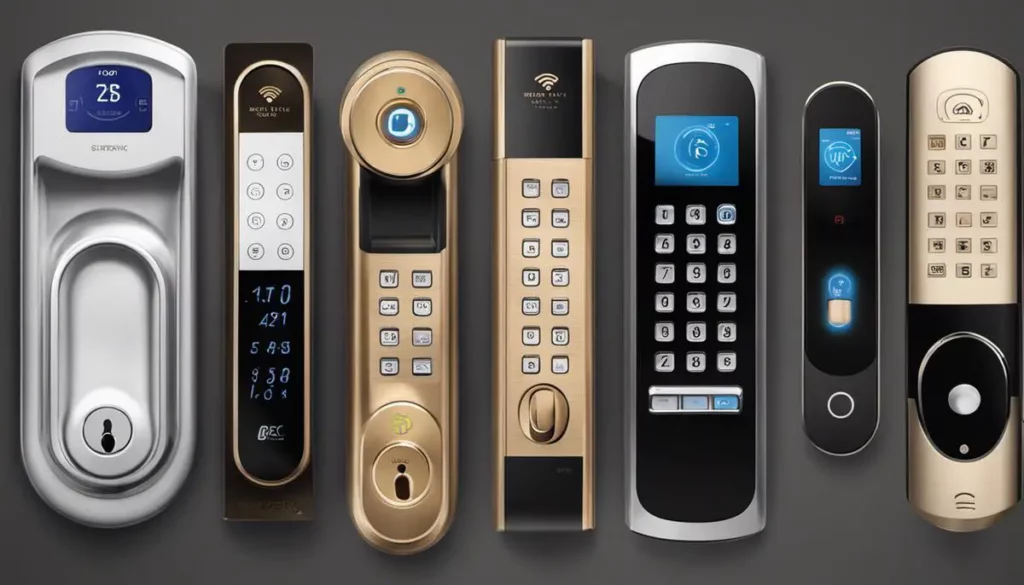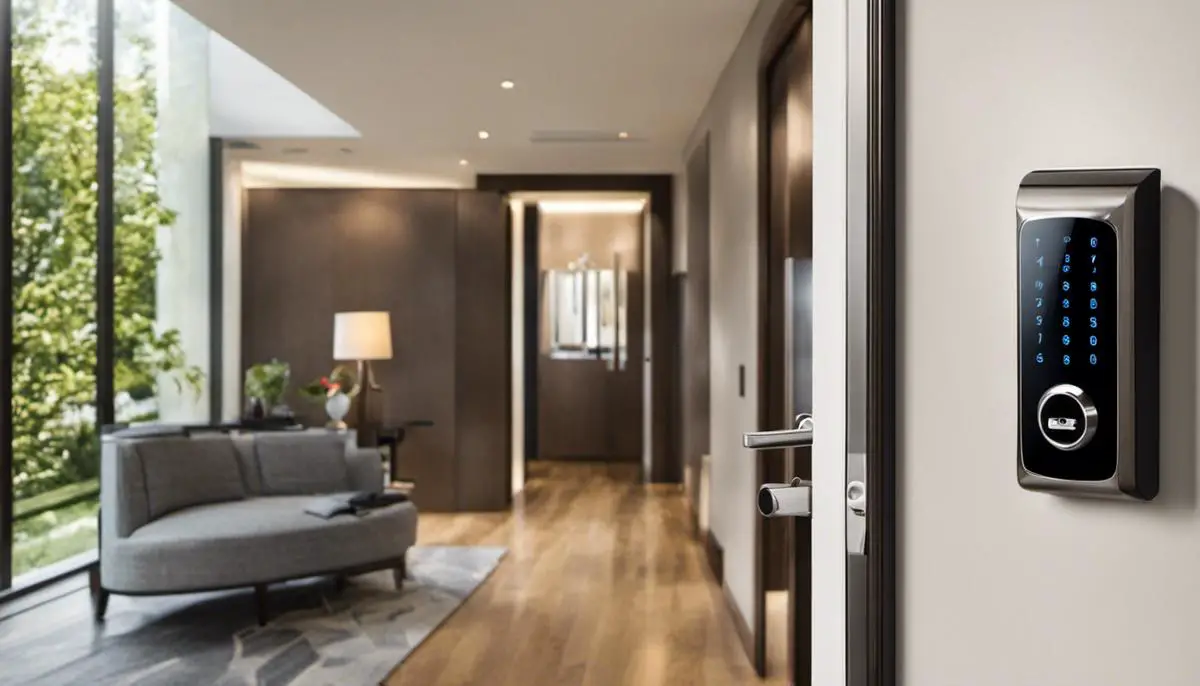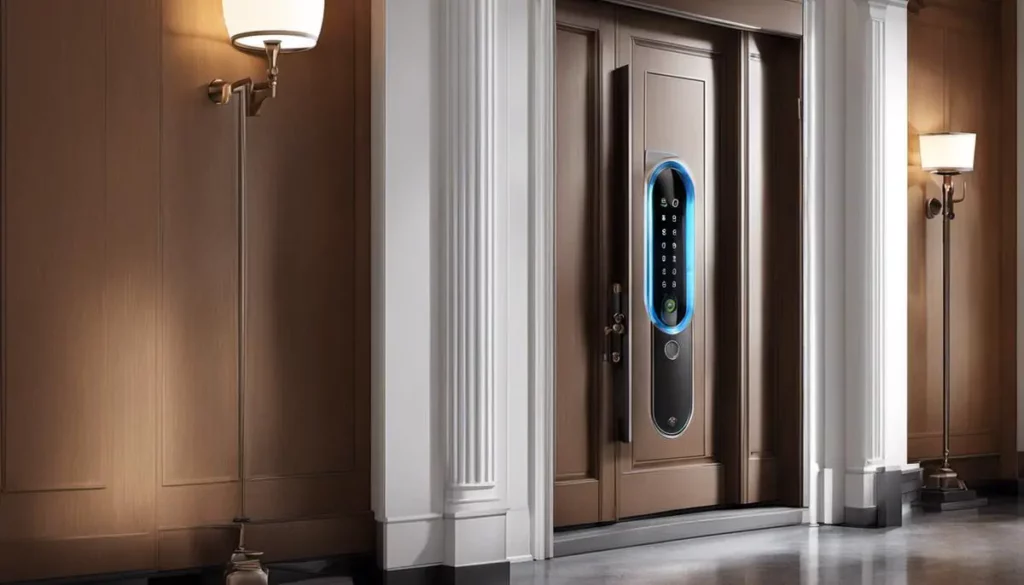In the evolving realm of home security, smart locks have emerged as a fascinating chapter, effortlessly blending technology with everyday needs. As enthusiasts or hobbyists, you could easily find yourself intrigued by the robust features and capabilities these devices possess. Embarking on a journey to comprehend and utilize these security marvels, we will touch upon the foundations and diverse forms of smart locks, their installation and upkeep, and even predict the future trends that may shape this industry. Hold onto your digital hats – a world of effortless security and convenience unfolds.
Understanding Smart Locks
Unmasking The ‘Smart’ in Smart Locks: More Than Just a Fancy Name
If you’re a home automation enthusiast, the term “smart lock” isn’t a foreign concept. However, if you’re new to the hobby or have just casually heard about it, you may find yourself wondering, “What makes a smart lock actually ‘smart’?” Is it about looking polished and refined on your front door? Or does the ‘smart’ stand for fancy add-ons and elaborate features? Get ready for an enlightening journey, where we shed light on these futuristic security devices.
To begin with, the ‘smart’ in a smart lock isn’t about appearance or glamorous add-ons. It is about the technology that powers these locks, making them more advanced, more convenient, and yes, smarter than traditional locks. Like many other ‘smart’ devices, from smartphones to smart TVs, smart locks leverify modern technology for a more seamless operation.
So, what highly intelligent tech strategies do smart locks employ?
The ‘smart’ in smart locks doesn’t just represent a fancy badge; it defines a whole new world of practicality, convenience, and advanced security solutions. It’s about empowering the user with the ability to control, monitor, and secure their homes with just a few clicks. If unlocking the future of home security is the aim, smart locks are indeed the key!

Types of Smart Locks & Their Features
Exploring the Assortment of Smart Lock Variants in the Market
It’s an incredible time to embrace the revolutionary smart locks, which are knocking out traditional locking systems out of the park! Delving into this fantastic world, one will encounter an array of choices, each endowing some unique features and attributes. Let’s grab a closer look at some of the more prevalent smart lock variants available in the market today.
One of the key variants to consider is the keypad smart locks. As the name hints, these don’t require any physical keys; instead, these function on an alphanumeric code structure, making them a lot safer and easier to handle. Even if someone stumbles upon your code, changing it is just a few button presses away.
Another variety of smart lock dominantly seen in today’s market is the biometric smart lock. These are equipped with innovative technology that leverages biological data for access controls like fingerprints, retina scans, or face recognition. This high-tech system raises the security bar manifold by ensuring access only to authorized users with registered biometrics.
Bluetooth-enabled smart locks are gaining popularity, leveraging the widespread use of smartphones for unlocking doors. Using low-energy Bluetooth protocols, these locks are designed to automatically unlock the door when the paired device is in proximity and lock it back once the device goes out of range.
Next up, we have the Wi-Fi locks that use your home’s internet connection for remote control. Beyond just locking and unlocking, a Wi-Fi Enabled lock enables you to track who is entering and exiting your home in real-time via smartphone alerts and notifications, adding an extra touch of surveillance to the mix.
Another variety seen in the home automation domain is the Z-wave lock, which can communicate with other Z-wave devices in your home. It requires a Z-wave hub, connecting various smart devices, and allowing you to control them through one central platform.
Lastly, do take a peek into the realm of NFC (Near Field Communication) enabled locks. These work on the same principle as tap-and-go payment systems. A tap of an NFC-enabled device, like a smartphone or a key fob, is all it takes to unlock the door.
With the rapid technological advancements, the smart lock industry continues to evolve, bringing to the forefront even more varieties, ensuring accessibility, convenience, security, and peace of mind for every preference in the market. So, the ultimate choice boils down to understanding the specific requirements, matching those with the features of different variations, and taking a plunge into the digital lock world! Roll out the welcome mat, for conventional keys are soon to be nostalgic memories!

Installing & Setting Up Smart Locks
Installing and setting up a smart lock can seem like a daunting task, but it is indeed possible for hobbyists to master it. The perks of owning a smart lock have already been established, yet it’s paramount to understand the ins and outs of installation to truly tap into its potential. Here’s a guide to get enthusiasts started:
Select and Purchase the Right Lock:
Once you are familiar with different types of smart locks, namely keypad, biometric, Bluetooth, Wi-Fi, Z-Wave, and NFC-enabled locks. The next step is choosing the one that perfectly fits your needs and aligns with your home infrastructure. Consider factors like integration capabilities, power requirements, and connectivity options while making a decision.
Uninstall the Previous Lock:
Using a screwdriver, carefully remove the old lock from your door. Remember to make a note of or photograph each part as you uninstall it. This will provide a clear understanding of the installation doctorate.
Installing the New Smart Lock:
Following the manufacturer’s instructions closely will ensure a smooth setup process. The installation process usually involves securing the deadbolt assembly into the door hole, attaching the mounting plate, and setting up the outdoor and indoor assembly.
Configuration:
Most smart locks are equipped with apps for smartphones to help you manage access, monitor usage, and customize lock settings. Download the application and follow the instructions to pair your lock with the app. This may involve creating an account, setting up a password or PIN, and adding other users.
Secure the Wi-Fi Network:
Nerd fact – It’s crucial to ensure that your home Wi-Fi network is secure because it’s the channel your smart lock will use for communication. It’s recommended to change your Wi-Fi password regularly and use security protocols like WPA2 or WPA3.
Test Your Lock:
Now it’s time for a fun test-drive! Test your newly installed smart lock multiple times to ensure it’s working correctly. Try locking and unlocking the door through different modes such as through the smartphone app, keypad, voice command, etc.
And last but not least, always remember, “Patience is the companion of wisdom.” The installation and setup of a smart lock have a learning curve, and mastering it takes time. Don’t hesitate to reach out to customer service if you find yourself in uncertain territory. Dive into this new age of safety and convenience at your own pace. Happy smart locking!
Smart Lock Maintenance & Troubleshooting
Just like any piece of technology, smart locks, with all their advancements and features, can occasionally have some hiccups. These glitches can range from minor annoyances to more complex problems that require a bit of problem-solving. But don’t worry! As fellow smart lock enthusiasts, we’ve got you covered with some common smart lock issues and how to fix them.
One often encountered woe is a smart lock failing to lock or unlock. Typically, this problem can be a result of depleted batteries. You’d be surprised how often this is overlooked! Testing batteries regularly and replacing them when necessary can nip this glitch in the bud. If new batteries don’t solve the issue, carefully reclean the inside of the lock and realign the door. Misalignment can make it difficult for the locking mechanism to operate properly.
Next on the all-too-common list is a smart lock disconnecting from the home’s Wi-Fi network. If this occurs, one of the first things to check is the signal strength. If the network signal is weak, the smart lock may struggle to maintain a connection. Consider using a range extension device, or better positioning of the lock and router for a more stable connection.
Another issue could be the smart lock failing to integrate with other smart devices in the home. The secret to solving this problem often lies within the app settings. Make sure that all devices are compatible, are running on the latest updates, and that correct permissions have been granted. Sometimes, simply restarting the app can do wonders!
Now, let’s say the smart lock’s keypad is unresponsive. This issue can often be remedied by resetting the lock’s system. Remember to check the manual for specific instructions, as the reset process can vary between different models and brands. If the problem persists, it may be time to contact customer support.
Experiencing glitches with biometric locks, such as fingerprint or facial recognition not registering? Cleaning the scanner to ensure that it’s free from dust and smudge marks is a great first step. The next would be to update and re-save the biometric information to give the system a fresh start.
Smart locks can also suffer from software bugs. This is often signalled by glitches like rapid battery drain, intermittent functioning, or random error messages. Periodically updating the lock’s software to the latest version can help eliminate any bugs causing these issues.
Despite the occasional hiccups, don’t be discouraged! Smart lock technology continues to improve, offering unmatched convenience and security. Remember, a little patience, periodic maintenance, and keeping up with updates can go a long way in keeping smart locks functioning at their best. And for the more tricky glitches, don’t hesitate to reach out to customer support. They’re there to help navigate even the most complicated issues. Surely, the benefits of smart lock technology far outweigh these sporadic snags. Isn’t the world of smart locks intriguing?

Future Trends in Smart Lock Technology
Thinking over the horizon, imagine a smart lock that intuitively locks and unlocks the front door based on the GPS location of a smartphone. Sounds fascinating, right? We’re not there… yet. But the future of smart lock technology is bright and thrilling.
One of the biggest leaps forward anticipated in this sphere is the incorporation of artificial intelligence capabilities. With AI-driven smart lock technology, not only will the lock learn the habits of the homeowners but also enhance security by alerting about unusual activities. For instance, if someone is fiddling with the door at an odd hour, the lock, through AI, might recognize this as a potential threat and trigger an alarm alert to the designated devices.
Next up is the concept of invisible technology. This innovation would involve not just hiding the mounting hardware as many of today’s smart locks do, but creating a lock that is entirely invisible from the outside. One example could be smart locks integrated into the door itself, providing security features without detracting from the aesthetic appeal of the door’s design.
Moreover, the focus is also shifting towards creating green, or eco-friendly, smart locks. These developments would utilize solar power or kinetic energy to function, reducing the electricity consumption associated with the traditional smart locks. As homeowners become more environmentally conscious, such technology will undoubtedly be greeted with open arms.
In addition, biometric technology within smart locks continues to evolve. Fingerprint recognition is expected to become even more refined, but don’t rule out other biometric possibilities. More innovative features may arise, such as voice or facial recognition, or even vein pattern recognition, which can increase the security level.
Lastly, home networks are becoming increasingly complex, and smart lock technology must keep up. As different smart home technology standards emerge, such as Zigbee, Z-Wave, and Thread, it is expected that future smart locks will become even more universally compatible, seamlessly integrating with an ever-widening array of home automation devices.
In conclusion, with all these developments, one can’t help but be excited for the next era of smart lock technology − an era marked by increasingly intuitive, efficient, and eco-friendly security solutions! Stay wired and tuned as you continue with this amazing hobby – there’s never a dull moment in the world of smart home technology!

A future with smart locks seems not just exciting, but almost inevitable. Their ability to bring comfort, convenience, and a heightened sense of security will increasingly resonate with technologically aware consumers. As we continue to delve deeper into the nuances of smart lock technology, we aim to fortify our understanding, expertise, and readiness to adapt with the changing faces of technology. In a world that is becoming more connected every day, our doorways, too, shall resonate with the click of seamless connectivity and fortified security.
